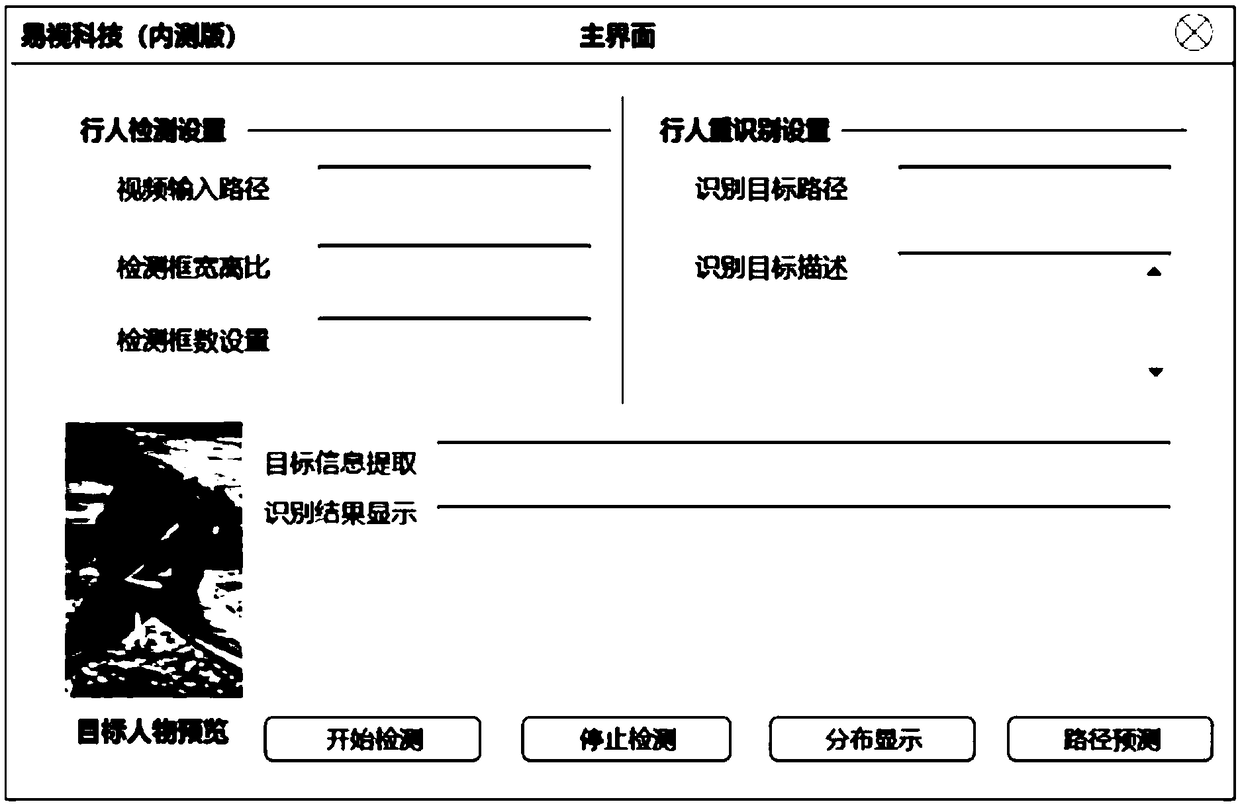A pedestrian re-identification monitoring system based on a depth convolution neural network
A pedestrian re-identification and monitoring system technology, applied in the field of computer recognition, can solve problems such as difficult to capture samples, low resolution, difficult face recognition, etc., to achieve the effect of avoiding performance degradation, good training effect, and improving accuracy
- Summary
- Abstract
- Description
- Claims
- Application Information
AI Technical Summary
Problems solved by technology
Method used
Image
Examples
Embodiment 1
[0054] The present invention provides a pedestrian re-identification monitoring system based on deep convolutional neural network, such as figure 1 As shown, the system includes:
[0055] As the camera network of the video acquisition device, the camera network is formed by several high-speed network ball machines 11 applying WiFi and the switch 12; the video acquisition device is used to collect images of measured pedestrians;
[0056] As an identification and monitoring device, a main control computer 2 with an identification and monitoring function;
[0057] A storage server 3 storing a pedestrian database; the pedestrian database is used to store target pedestrian images;
[0058] The identification and monitoring device is used to obtain the image of the measured pedestrian from the video acquisition device; obtain the image of the target pedestrian from the database of pedestrians, and use the image of the target pedestrian to learn the characteristics of the target ped...
Embodiment 2
[0066] This embodiment is a preferred implementation mode based on the above-mentioned embodiment. The difference between this embodiment and the above-mentioned embodiment 1 is:
[0067] In this embodiment, the identification and monitoring device of the monitoring and identification system further includes an input device; the identification and monitoring device is also used to process the target pedestrian through natural language after obtaining the description of the target pedestrian from the input device. Describe and screen out the key information of the target pedestrian, and then use the key information of the target pedestrian to apply deep learning to obtain the characteristics of the target pedestrian. The key information of the target pedestrian refers to the color, gender, age group, etc. In this technical step, only the description of the relevant pedestrian needs to be input, and the relevant information will be automatically screened out after natural languag...
Embodiment 3
[0073] This embodiment is a preferred implementation mode based on the basic implementation mode of the above-mentioned embodiments. The difference between this embodiment and the above-mentioned embodiment 1 is that this embodiment is some examples and descriptions of the preferred implementation modes of the data set.
[0074] In some preferred embodiments, the datasets of the pedestrian database include public datasets with labels and real datasets without labels. When performing pedestrian re-identification training, preprocessed pedestrian images are required as training images and test images. Due to the high difficulty of sorting real data sets and the long period, in this technical solution, on the one hand, the existing public data sets are used for pedestrian re-identification training; Combined with training, the trained neural network can take various factors into consideration more comprehensively.
[0075] In some embodiments, the public data set includes one or...
PUM
 Login to View More
Login to View More Abstract
Description
Claims
Application Information
 Login to View More
Login to View More - R&D
- Intellectual Property
- Life Sciences
- Materials
- Tech Scout
- Unparalleled Data Quality
- Higher Quality Content
- 60% Fewer Hallucinations
Browse by: Latest US Patents, China's latest patents, Technical Efficacy Thesaurus, Application Domain, Technology Topic, Popular Technical Reports.
© 2025 PatSnap. All rights reserved.Legal|Privacy policy|Modern Slavery Act Transparency Statement|Sitemap|About US| Contact US: help@patsnap.com



